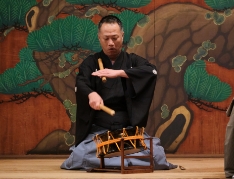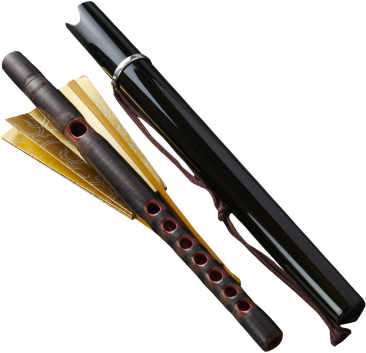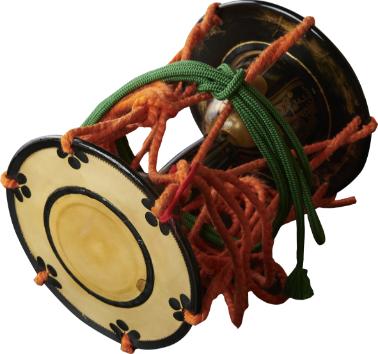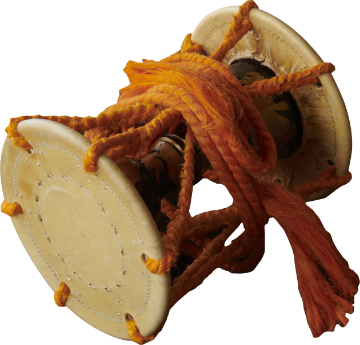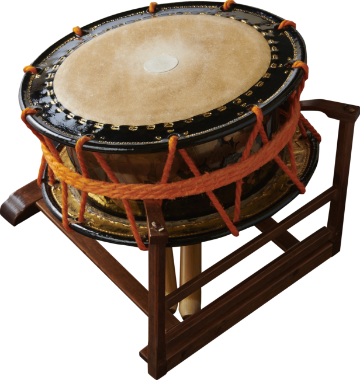
Noh Music

Noh Music

 Chant: Utai
Chant: Utai
- Songs and musical accompaniments
express inner emotions
and psychological states. -
Chant (utai) and instrumental music (hayashi) create the structure of noh music. The chant has some sections that are sung with a melody and others that are close to speech. The actors vocalize the speech sections, while either the actors or the chorus (jiutai) singing in unison perform the chant sections.
Noh “chant books” (utaibon) indicate the melody and rhythm of a song alongside the poetic text.
The chorus has a range of important functions: explaining the progress of the play, describing mental states and scenes, relating past events, and narrating the story in the third person.
 Hayashi
Hayashi
- Ensemble of four instruments
-
The hayashi ensemble consists of just one melodic instrument, the noh flute (fue), and three drums: the small hand drum or shoulder drum (kotsuzumi), the larger hand drum or hip drum (otuszumi), and the stick drum (taiko).
In a stage space in which stillness and movement intersect, the four instruments can raise the tension of a scene and create a sense of pulsating energy. Although, like in chamber music, the ensemble is small, the performance rivals that of a large orchestra in its ability to alternate between moments of deep serenity and moments of tremendous power.
The presence of three percussion instruments in the ensemble indicates the central role of rhythm in noh. Of particular importance is the timing, described as ma, or interval, between drum strokes. The drummers express the interval between one drum stroke and the next by capturing the beat in their bodies and communicating this to the actors and chorus through vocalizations called kakegoe.
The noh instruments
- Fue (Nohkan)
-

- Kotsuzumi
-
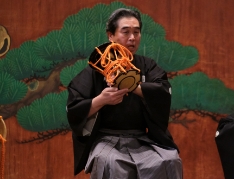
- Otsuzumi
-
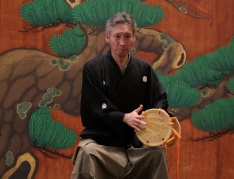
- Taiko
-
